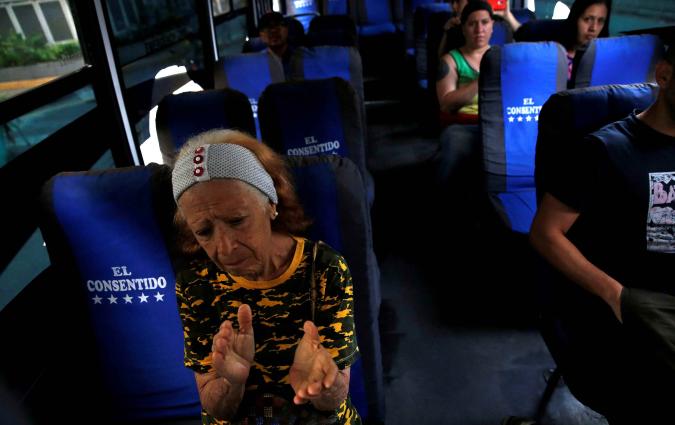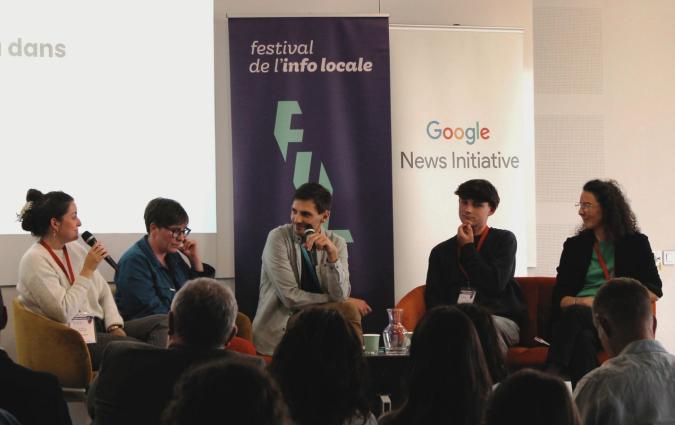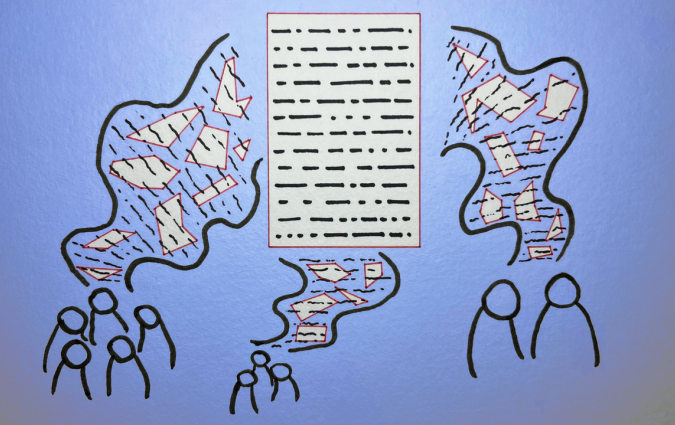Reinventing local news for the digital era: Five ideas from France, Italy and Belgium
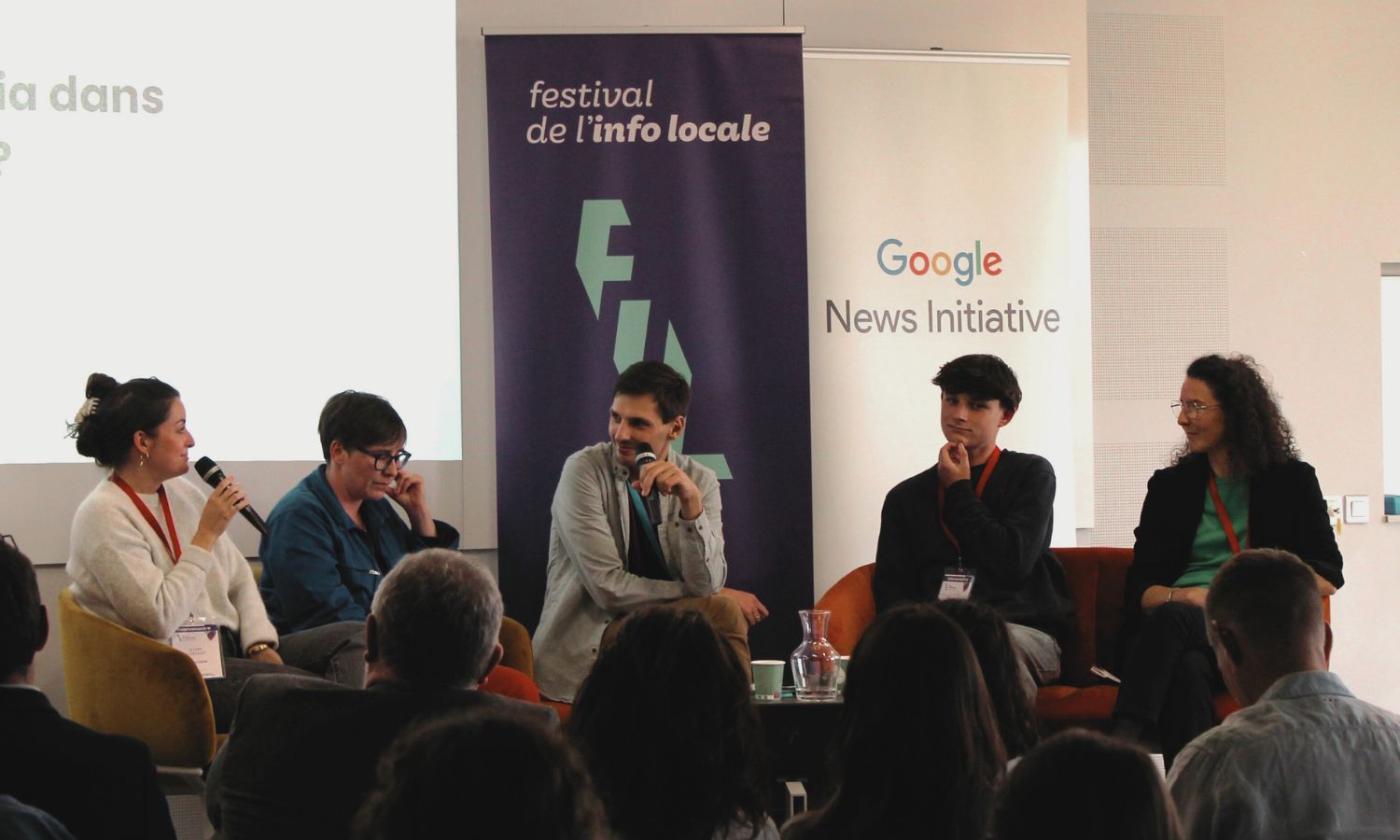
One of the sessions of the Festival de l’info locale 2025 en Nantes.
In late September, journalists gathered in Nantes for the 7th edition of the Festival de l’info locale, an annual event on the future of local news. This year’s programme featured discussions on local election coverage, practical uses of AI, ideas for in-person engagement with readers, and sustainable business models for local newsrooms. Here are five ideas that stood out to us:
1. Treat local elections as an ongoing story
Mediacités, a local investigative outlet with newsrooms in several French cities, shared how they take a long-term view of local election coverage with their Radar project. The investigation, which they started in 2020 right after the local elections, steadily tracks campaign promises over the full six-year term of local officials.
“We decided to pull out each of the elected mayors’ campaign promises and build a mini webpage for each one. We’ve tracked these promises ever since, assessing what’s been achieved and what hasn’t,” said Benjamin Peyrel, Mediacités’ editor-in-chief.
For example, the team found that Toulouse’s mayor had made 299 pledges in the 2020 election – of those, only 34 have been met so far (like increasing metro frequency during the summer holidays), 32 have been abandoned (like pedestrianising a local bridge), and the rest are a work in progress.
Each verdict comes with an analysis by a Mediacités journalist, to provide context and sources for their categorisation, and links to other relevant reporting they’ve done on the topic.
In addition to providing citizens with straightforward information on their cities, Radar also makes it harder for local politicians to spin their record: “For example, the city of Nantes may say it’s met 94% of its 2020 commitments, but our analysis suggests it’s more like 68%,” Peyrel said.
The team also shared why it decided to make Radar free to access and put it outside Mediacités’ main subscription site: “[Local elections] are a matter of citizenship and democracy, so we decided everyone should be able to see what’s been promised and what’s actually been done.”
The project is ongoing and journalists are still updating their analyses as the officials’ terms progress. This helps track local governance in real-time while also giving journalists a detailed record for the next election cycle.
“That’s why we started doing this in 2020. It’s easier to do the work over six years than to wake up in September 2026 [when the next elections are due to be held] and say, ‘Hey, let’s do an analysis,’” Peyrel explained. “We already have five and a half years’ worth of work ready to go for that.”
2. Go talk to your public, in-person
L’Avenir, a newspaper covering several regions in Belgium, has taken a long-term approach to local election coverage as well, by focusing on in-depth, in-person conversations with voters.
In the year leading up to the 2024 local elections, the team kitted out a caravan, which they set up in 12 different city centres across 12 months. At each stop, their journalists met local residents for face-to-face conversations about upcoming election issues.
The initiative, called “L’Avenir, c’est votre voix” (“L’Avenir, it’s your voice”), was built around 12 themes which ranged from access to daycare to transport to public safety.
“We tried to focus on subjects that spoke directly to people’s daily lives, without falling into clichés,” explained Frédéric Wéry, a journalist from L’Avenir.
“The idea was to go meet residents where they are in order to move beyond talking to them online,” he said. “We wanted to reach people who might normally avoid the news altogether.”
Their goal was to avoid surface-level responses and to have long, genuine conversations with the people they spoke to. “It wasn’t about getting a quick ‘man-on-the-street’ pull-quote for an article,” Wéry said. “We took time to listen and to write complete, thoughtful accounts. Each conversation fed into a multi-page feature that included an in-depth interview with someone we met during the event, alongside a broader analysis of the issue, an editorial, and a range of perspectives from other residents.”
The project required substantial resources and planning. “It was a big operation,” Wéry said. “And to be honest, people weren’t exactly queuing outside our caravan to participate,” he admits. “We often had to take the first step and approach them in the square.”
But the result was more nuanced election coverage, pulling from real conversations with citizens rather than one-dimensional online comments, which Wéry says was invaluable for the journalists’ election coverage.
3. Explain your unique value to local advertisers
Beyond audience engagement, panellists also discussed how local newsrooms are tackling revenue models.
In a panel on monetisation in the age of AI, Ronan Leclerc, Media Division Director of the French regional paper Le Télégramme, argued that local media need to make a stronger case to local businesses about the value of advertising in their publications.
“We don’t have the same marketing power as tech giants, but local and regional newspapers are still incredibly powerful media for local businesses,” he said. “Our ads drive real purchasing decisions.”
He pointed to research showing that print ads in local media are among the most effective ways for advertisers to reach attentive audiences.
“One euro invested in advertising with [local press] generates on average €5.70 in revenue,” Leclerc says. “Local daily press is the second most engaging medium for ads, just behind cinema. That makes sense, because at the movies, you’re a captive audience and you can’t skip the ads. And it’s a similar thing with print media: when people sit down with a newspaper, they’re focused. That makes it a very high-performance advertising medium.”
Our own data from the Digital News Report 2025 also shows that local and regional news brands enjoy the highest rates of trust of any media in France at 61%, with overall trust in news in the country being much lower (29%).
Leclerc argues that local and regional newspapers should use this data to spend more time and effort convincing businesses to relocalise their ad spending.
“We need to tell them: reinvest your advertising budgets with local, regional, and independent media. We are powerful and effective, and by doing so, you’re supporting the local economy. At the end of the day, that’s where your customers are.”
4. Future-test your local election candidates
Reporters also discussed how to think beyond standard interview formats in local election campaigns and try asking future-based scenario questions instead.
In a workshop on creative ways to cover local elections, Design Friction, a ‘speculative design’ studio that helps organisations think about the future, worked with local journalists to experiment with unconventional, future-based interview formats.
For instance, instead of asking local election candidates about current projects or budgets, they were encouraged to ask scenario-based questions like: ‘If the city suddenly had a €30 million surplus, how would you spend it?’ Or: ‘It’s 2040, and the city is facing its fifth consecutive heat wave of 50°C heat. What is your plan [to mitigate any adverse effects]?’
Future-focused questions can shake politicians out of their routine talking points, they think, and prompt more constructive, long-term discussions in the media.
5. Spend time digging into your archives
In a session on practical use-cases for AI in local news, L’Eco di Bergamo, a local newspaper in Italy, shared how it is using newly available AI tools to give new life to its archives.
A team at the paper spent 4 months training AI algorithms to recognise and categorise more than 70 years of obituaries from its archives. The result was a searchable database of 320,000 records, allowing readers to explore their local and family history through the papers’ obituaries.
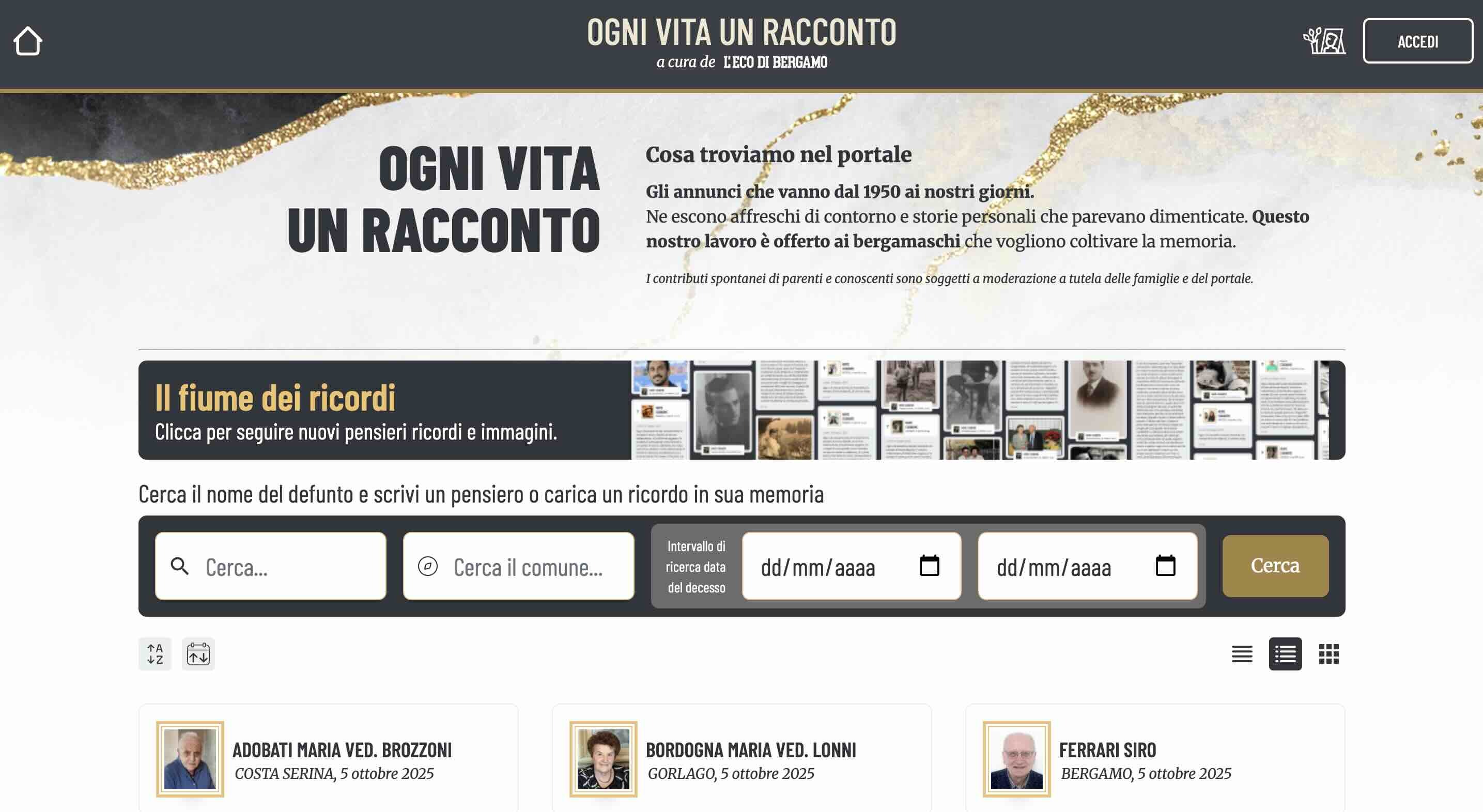
“It’s like a treasure chest of memories from our province has been opened,” said journalist Daniela Taiocchi, who led the project.
The initiative has an interactive element as well, allowing readers to add their personal memories or notes to the digitalised obituaries, a feature which Taiocchi says has been hugely popular.
Back in the newsroom, Taiocchi also now regularly uses the archive to source new stories, pulling out pieces about people and events in the city’s past that can speak to current events.
Taiocchi explained how this project showed the value of a local paper for a community:
“L’Eco di Bergamo, like other local papers, has never been merely a sheet of news. It has always been an archive of the community,” she said. “It is a place of recognition. Readers find not just information, but traces of their lives, their families, and their grief.”
She also outlined how the obituaries database has had particular significance for Bergamo, as the city was one of the first and the hardest-hit cities in Europe during the 2020 COVID-19 pandemic.
“During the darkest days of the pandemic, obituaries [in L'Eco di Bergamo] went from taking up two-and-a-half pages a day to thirteen pages a day,” said Taiocchi. In a context like that, she says, the project is more than a simple database. It’s a ‘guardian of memory’ for the city’s residents.
In every email we send you'll find original reporting, evidence-based insights, online seminars and readings curated from 100s of sources - all in 5 minutes.
- Twice a week
- More than 20,000 people receive it
- Unsubscribe any time


